Comeback Mountain
For 2015/16, skiing returns to Ascutney. Here’s how a group of local skiers and riders set out to save it.
By Evan Johnson
In a part of Vermont known for gentle, rolling hills and pastures, the 3,130-foot high Mount Ascutney erupts out of the landscape like some kind of waking giant. Its steep slopes are a riot of green, tinged with autumn’s first reds and golds. Etched into its flanks are the outlines of
ski trails.
Time has not been kind to the defunct ski area. It has been five years since the bullwheels turned and the last remaining lift, a rusty double, sits idle in the hot air. Above the parking lot looms the scorched hulk of a former base lodge, which caught fire on a frigid night last January.
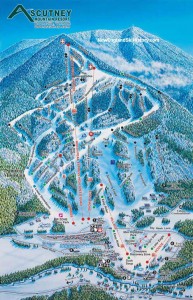
But on this August day, the parking lot is packed. Kegs of Long Trail are tapped and flowing, the meatballs at the food truck are ready and a golden retriever flaunts a stolen frisbee. It’s the kind of summer afternoon in West Windsor when everyone hopes to sneak out of work early to enjoy a ride in the woods. For the 400 mountain bikers arriving from seven states for the Eighth Annual Vermont Mountain Bike Festival, that’s precisely the plan.
Tom Stuessy, president of the Vermont Mountain Biking Association (VMBA), which organizes the annual festival, glances up at the hulking remains of the base lodge. The collapsing roof and shattered windows make for one hell of an eyesore, but he doesn’t mind. “It looks ugly, it’s awful, but it’s a sign of changing times,” he says.
“There’s a network of multi-use trails here and they are going to be here forever,” he contines. “It’s a special story.”
Nearby, sitting on a folding camp chair in the shade, Tom Galloway from Mt. Holly, Vt. sips a Guinness and wrangles a friendly springer spaniel pup named Pugsley (named after bike manufacturer Surly’s premier fatbike).
Having ridden in the Vermont 50 for 14 of the 20 years the 50-mile cross country bike race has been held, Galloway has more than just a weekend warrior’s familiarity with the West Windsor area trails. “Ascutney’s like a mini-Burke,” he says. “We’ve got 45 miles of trails with some killer climbs and some sweet downhill.”
And when the snow falls, the mountain presents a different kind of playground: “It’s got the steeps, it’s got easy-access and it’s close to home,” he adds.
And soon, it may once again have a lift that runs.
Comebacks are rare, but Mount Ascutney and the town of West Windsor and surrounding area are poised to pull one off.
A mountain’s town
Glenn Seward has lived in the West Windsor area for 47 years and worked for 18 of them at Mount Ascutney Ski Resort, doing everything from mowing lawns to making and grooming snow to flipping burgers in the kitchen. “Everything that’s involved with running a ski area,” he says. At one point, he was one of some 200 full- and part-time employees, many of who lived locally.
For Seward and others, Ascutney was not just a ski area or a job: it was a cornerstone for the community. As West Windsor resident, telemark skier and trail builder Jim Lyall recalls, in a town of about 1,000 residents there were three spots people would go to meet.
“You used to see your neighbors at the school, the post office and the ski area,” he says. “There used to always be something going on there.”
Locals have been skiing the mountain for as long as anyone can remember. In 1935, the Civilian Conservation Corps and the Windsor Outing Club cut the first trail down the face of the mountain. Development of the Ascutney ski trails occurred shortly after and a series of owners expanded the resort. Fans of Magic or Mad River Glen would recognize the old-school east-coast style of trails like Touch N’ Go or Snowdance. The mountain’s unique forest composition also offered some 50 acres of glades through well-spaced hardwoods and dense spruce forests.
The 1980s saw some $65 million in investments at the ski resort, but soon the resort was mortgaged to the hilt. A group of investors called Summit Ventures Inc. filed for bankruptcy protection in 1990. New Yorkers Steve and Susan Plausteiner bought it for $1.1 million in 1993 and attempted to restart the resort the following winter. They were not successful and in 2010, Ascutney’s primary lender, New York investment bank MFW Associates, took possession. A liquidation followed and the chairlifts were sold. Meanwhile, the trails and base lodge sat empty.
The loss of the resort sent ripples through the local economy. Seasonal traffic dropped off and restaurants, inns and stores in the Upper Valley area closed. A handful of buyers inspected the defunct resort in hopes of reopening it, but the costs were prohibitively high—an estimated $10 million. Additionally, Ascutney’s lack of a ridgeline made it difficult for storm clouds to accumulate and drop snow.
“Any buyer quickly came to the realization that it would take an inordinate sum of money to get it up and running in a reasonable fashion,” Seward recalls.
Without a prospective buyer, the fate of the mountain and even the area was uncertain. MFW’s other options to recoup losses included subdividing the property and selling off real estate or leasing it to a logging operation.
Aside from the blow to the economy, the closure threatened the culture and community. “There was a possibility that we could lose the school, the general store, and the post office as well as the ski area—things that really define a town,” says
Lyall.
It takes a village.
But as the resort declined, a group of mountain bikers began quietly developing a network of multi-use trails around the West Windsor area. Organized in 2006, the Sports Trails of the Ascutney Basin (STAB) served as a united voice for local cyclists and an organization that could work with local property owners.
In 2011 Seward, at the time the chair of the West Windsor selectboard, approached STAB and its trail manager Jim Lyall with an idea to expand trails in the West Windsor area. Inspired by the success of other trail networks around the state, including East Burke’s Kingdom Trails, the plan was to establish the Mount Ascutney area as a similar destination.
“Brownsville is a recreational community,” Seward says of the small village in West Windsor. “Given the fact that we had a highly respected trail system it only seemed appropriate that we use it to replace some of the visitors we had lost.”
With permission from MFW and some financial support from the town, STAB began converting Nordic ski trails into mountain bike trails and improved signage. Even as the lifts were being sold off, locals continued to ride and ski the trails and hike its steeps in the winter.
But while the agreement allowed STAB to expand the trails and use the defunct resort’s parking lot, it didn’t provide much room for long-term growth. As Lyall puts it, “It was hard to develop mountain biking and impossible to do anything with skiing under that situation.”
That all changed when it was announced that the resort was about to go back on the market.
The comeback.
In 2013, Kate Wanner was on her way home for Thanksgiving when she got a phone call telling her the mountain, still owned by MFW, was about to come up for sale. A project manager for the Trust for Public Land (TPL), which works to preserve land for continued public enjoyment. Wanner recognized an opportunity.
Yes, Ascutney had unquestionable recreational value, but it is also ecologically unique: the forests are an uncommon blend of species in the northeastern and Appalachian forests, including oak, pine, spruce and fir.
“This seemed like a perfect spot,” she recalls. “Not only would we be protecting high ecological values, but also recreational, cultural and historical values of the community and the entire region.”
Over the next year, the town and TPL developed a plan to buy the 469-acre parcel and add it to the existing 1,112-acre town forest, which abuts the resort property. A conservation easement would then be placed over the expanded town forest to preserve it from development.
Wanner says that placing a large easement over the area will ensure its protection and allow organizations like STAB and Mount Ascutney Outdoors to still develop recreational trails.
“People can invest more time and money into parking lots, kiosks and trail signs— the permanent things that you don’t want to spend a lot of money on if there’s the possibility that your trail network could disappear in a year,” she says. “By permanently securing it you can really start to invest in marketing it and trying to attract folks on an annual basis.”
At a special town meeting on October 14, 2014, West Windsor residents packed Story Memorial Hall to cast ballots on the proposed deal. It passed 254-79.
Questioning motives.
Despite the overwhelming majority that supported the town’s move to buy the area, a handful of residents began challenging Seward, the selectboard chair, about his motives, saying that he personally stood to profit from the move.
“It’s something you don’t see everyday and that raised some eyebrows,” Seward said of the discussion around buying the area.
After moving to the area in 1978, Seward and his wife Shelley began buying parcels of property and currently own approximately 23 acres around Mount Ascutney. Seward, who is now retired, was the co-owner of a local construction company for 20 years.
As an owner with property abutting the Ascutney area, Seward says he was plagued with the allegations since the start of the project. The accusations became louder when he and his wife went before the town with a plan to establish a nonprofit that would oversee the skiing and trails in the town forest in conjunction with STAB.
Even though the critics made up a small minority, Seward decided to remove himself from the discussion. He resigned from the town selectboard, where he had served as chairman for the past five years, stopped researching the nonprofit, dissolved a stewardship fund that would have managed the area and closed recreational trails on his property.
In his March 23 resignation letter, Seward said his integrity and character had been questioned during the process.
“It got to the point where it was not worth it to us anymore to spend hundreds, if not thousands, of hours of our time and a considerable amount of money to do this when our motives were being questioned,” he says. “We felt it was best for us to step aside and let someone else take the lead.”
While Seward stepped aside, the town and TPL moved forward to try to raise $905,000 to purchase the area. So far, TPL has secured $780,000 in grants and donations, the first $1,500 of which came from Burlington outfitter and online retailer Outdoor Gear Exchange as part of its OGE Charitable
Grant Fund.
The organization has received another $112,000 in individual donations and hopes to raise the remaining $23,000 by the end of September. If so, it can close on the deal by the end of 2015.
A new, non-profit resort.
Picking up where the Sewards left off is volunteer Laura Farrell, who is setting up a new non-profit, Mount Ascutney Outdoors, to manage the ski trails. A retired distance runner, Farrell helped organize the Vermont 50 and the Vermont 100, two legendary long distance bike and running races that start and finish in West Windsor pastures.
Farrell wants to see a community ski area with a similar operating structure to Cochran’s Ski Area in Richmond, where she works as an event coordinator, fundraiser and grant writer. STAB will manage the mountain bike trails.
Starting this winter, Farrell and others hope to have a rope-tow running from the base area to what had been the mid-station near the top of the mountain. The current plan is to leave the uppermost third of the mountain open to backcountry skiing while the bottom two thirds of the mountain will be managed as a non-profit ski area.
The uppermost portion of the mountain would be accessible to hikers willing to skin or hike. Portions of the expanded town forest would be maintained for dispersed backcountry skiing.
“We want to get people excited again,” Farrell says. While tickets to ski resorts in the state can run near $100 for an adult and much more for the entire family, Farrell wants to keep lift tickets and passes to the revived Mount Ascutney much cheaper. “The goal is to make it a community ski area that will be affordable to anybody and everybody.”
Her committee includes Jim Lyall, who will maintain the trails for skiing and biking and STAB has Act 250 approval to cut five more trails next year.
A gem to treasure.
In the old ski area parking lot, the flow of traffic continues as the setting sun stretches shadows across the grass. In its second year at Ascutney, VMBA fest has nearly doubled in size.
Sitting under the extendable awning of their Econoline 350 RV, Mark and Barbara Tucker enjoy the sunshine and some ice cream sandwiches with their two kids. The family drove from Sheffield, Vt. for the weekend and say the two-hour long drive was worth it.
“Biking is a lifetime sport,” says Tucker. “You can start when you’re knee-high and keep riding when you’re 90. There are always people doing it or you can go out and do it by yourself. But the thing that brings people together are trails like this.”
While everyone appreciates the outside traffic and notoriety VMBA has brought to Mount Ascutney, as VMBA president Stuessy says, “The most impressive thing that I’ve seen is the passion at the local level. Everybody recognizes what a gem they have here in their backyard.”
A brief history of Ascutney’s ups and downs.
1935: The Civilian Conservation Corps and the Windsor Outing Club cut the first trail on Mount Ascutney, nearly 5,400 feet in length. It parallels what will become a summit road.
1946: Catherine “Kip” Cushman and a group install two rope tows and several trails. The mountain is deemed a success and draws hundreds of skiers over the Christmas holiday.

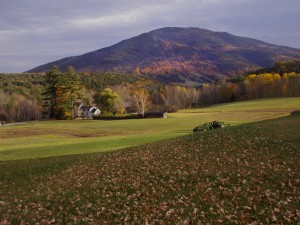
1949: After a poor winter, Ascutney is bankrupt. Kip Cushman’s brother buys the area and turns it back over to his sister.
1957: John Howland buys the area and puts in a T-bar and snowmaking.
1963: Walter Paine buys the area in 1962. A new base lodge is built and a chairlift is added, allowing skiers access to the upper part of the mountain.
1983: After changing hands several times, the resort files for bankruptcy. Summit Ventures buys it for $1.5 million and invests more than $65 million to build condos, add lifts and improve snowmaking.
1990: Summit Ventures Inc. files for bankruptcy protection.
1993: New Yorkers Steve and Susan Plausteiner buy Ascutney for $1.1 million and the following winter, relaunch the resort.
2002: Curt Warren sets a hang-gliding record for Ascutney by gliding from its summit 131.6 miles south to Connecticut, sealing the mountain’s reputation as a premiere launch site.
2006: Sports Trails of the Ascutney Basin (STAB) is founded with the idea of building recreational trails for skiing and mountain biking.
2008: Foreclosure proceedings start, with bids coming in to buy the lifts from Burke, Crotched Mountain and Pat’s Peak in New Hampshire.
2010: The Plausteiners’ primary lender, New York investment bank MFW Associates takes possession of the resort. The mountain is closed for the season.
2011: STAB, in cooperation with the town and with the permission of MFW begins developing trails around the former resort.
2013: The Vermont Mountain Bike Association holds its annual gathering at Ascutney. The event is such a success, VMBA Fest returns in 2014 and by 2015 attracts more than 400 participants.
2013: That fall, The Trust for Public Land and the town of West Windsor begin to develop a plan to add the resort to the existing town forest.
2014: Residents cast ballots on the proposed deal. It passes 254-79.
2015: TPL secures $780,000 in grants and donations and hopes to close the deal by the end of the year.
2016: Skiing and riding may return to Mount Ascutney.

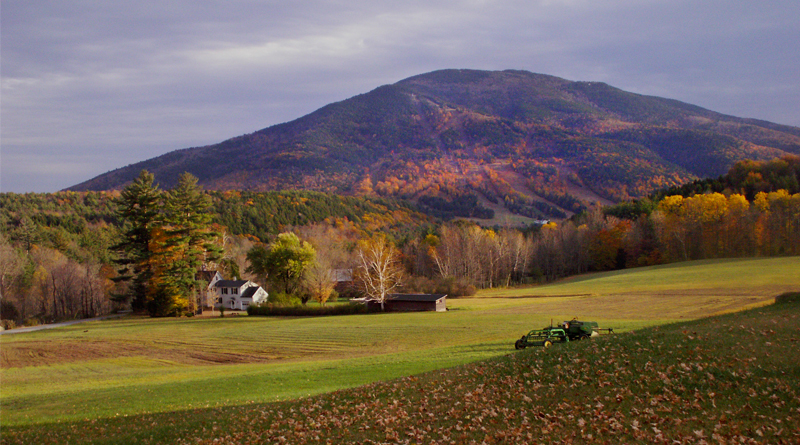

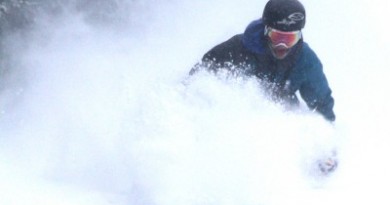
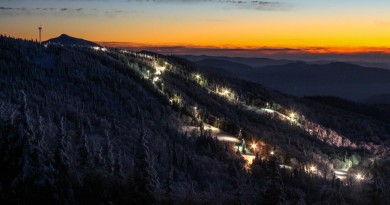
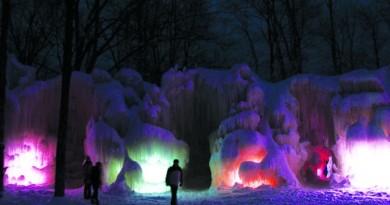
love love love this Mountain….learned to ski on those trails and my heart belongs to Mt. Ascutney….
Great to hear Linda! We’re thrilled its coming back!